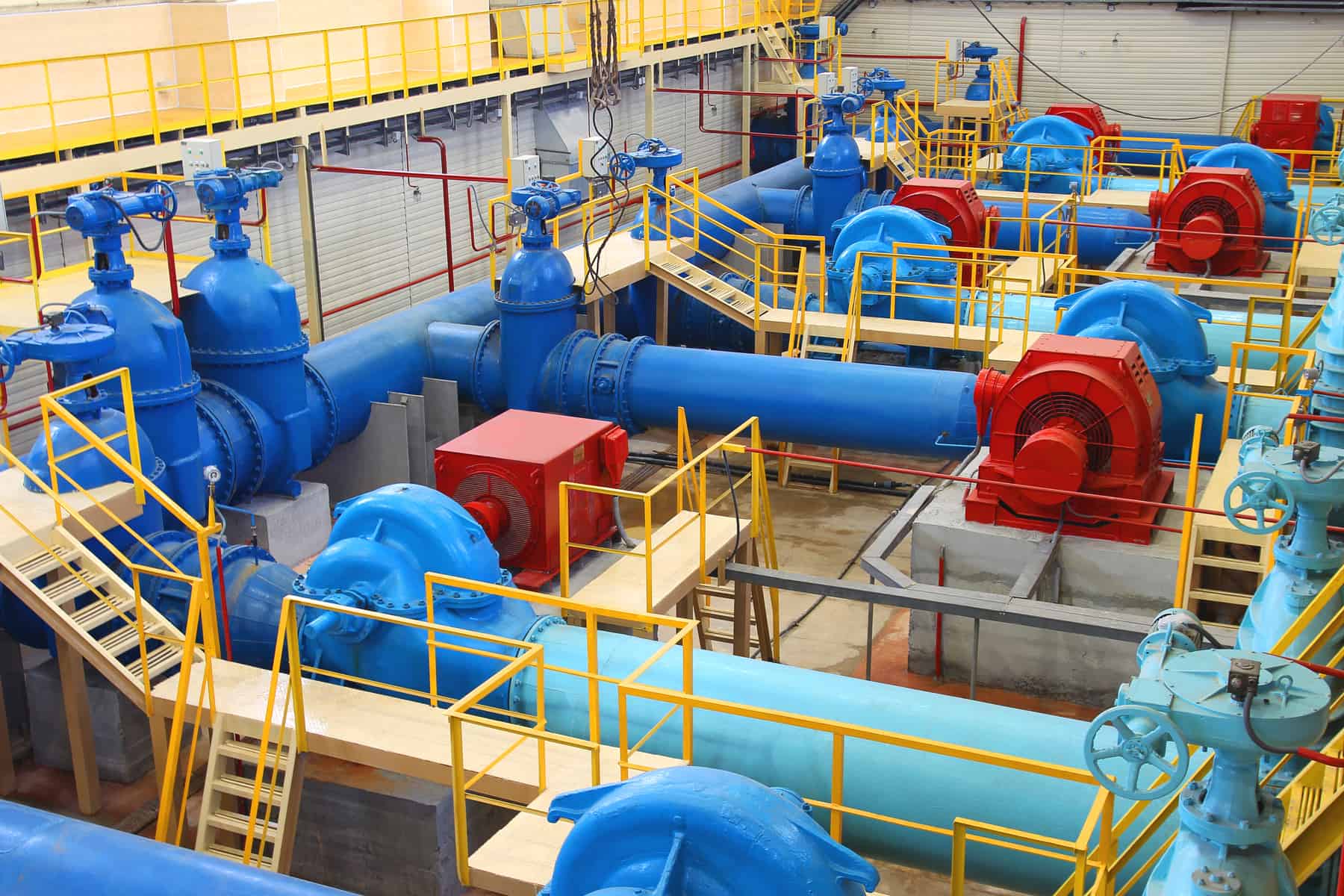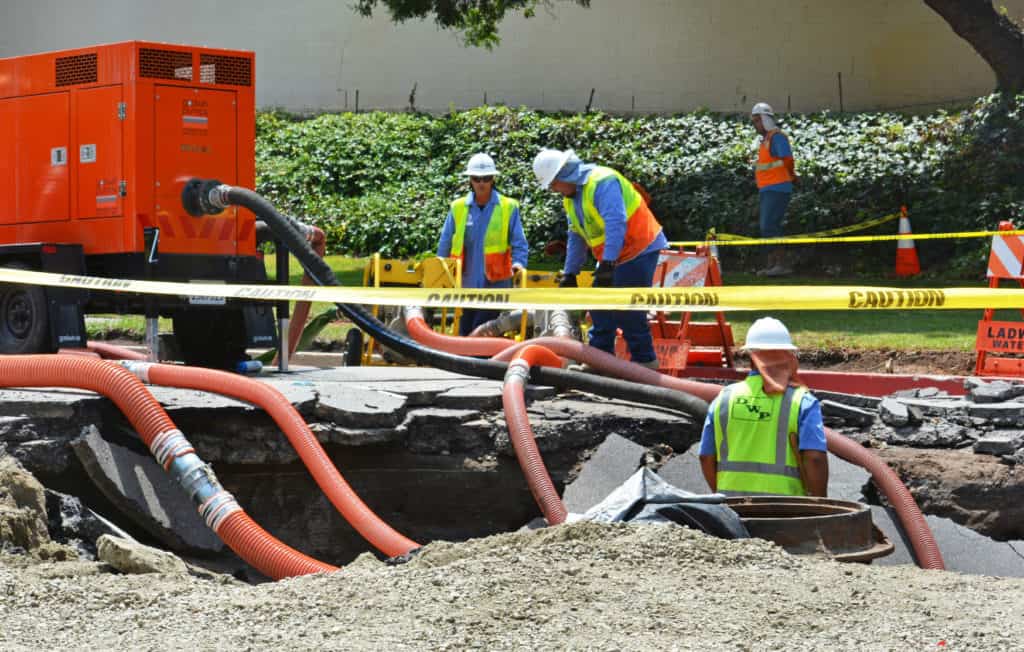
In addition to the external water infrastructure—dams, canals, and reservoirs—there is also an extensive piped water infrastructure. That piped system includes the components for collecting, treating, and distributing drinking water, and for collecting, treating, and releasing treated wastewater. The network is vast, expensive, and leaky.
Piped water development corresponds to population booms and economic booms that accelerated the system’s expansion, while wars and economic downturns slowed down the expansion.1For an excellent overview of water infrastructure throughout history, see: David Sedlak, Water 4.0: The Past, Present and Future of the World’s Most Vital Resource (New Haven: Yale University Press, 2014). Unfortunately, all piping systems fall apart over time. Pipe lifetimes have great variability, and depend on factors such as their use, local climate, pipe materials, and soil composition.2U.S. Environmental Protection Agency, The Clean Water and Drinking Water Infrastructure Gap Analysis, EPA-816-R-02-020 (Washington, 2002). Shifting soils and tree roots strain pipes and can trigger their failure. The flow rates, variability of flow rates, water composition (including potentially corrosive components), and frequency of use all affect the stresses and strains on the pipes.
Climatic conditions also affect the pipes’ structure. Climates that cycle through freezes and thaws, or wet seasons and dry seasons, cause the pipes themselves and their environment to expand and contract or shift dramatically, putting additional strain on the pipes. The pipe materials themselves are also important. Cast iron pipes last longer than steel pipes that last longer than PVC (polyvinyl chloride) pipes. If the soils or pipes contain corrosive chemicals, they will eat away at the pipes, accelerating their decline.
Deterioration of the piping system is inevitable, so the U.S. Environmental Protection Agency (EPA) conducted a gap analysis to determine the needs of the U.S. water infrastructure.3U.S. Environmental Protection Agency, The Clean Water and Drinking Water Infrastructure Gap Analysis, EPA-816-R-02-020 (Washington, 2002). While every pipe will break eventually, it is hard to predict which pipe will break when. To approximate the risks, EPA scientists used an aging model with deterioration distribution for each pipe material. Pipes installed before 1910 with cast iron are assumed to last 120 years. Pipes installed before 1945 with steel are assumed to last 100 years. Pipes installed after 1945 are assumed to last 75 years. Unfortunately, their deterioration rates could coincide after 2015, implying that water systems might start crumbling all at once.

The infrastructure issue explains why the U.S. water system is so leaky. Anywhere from 10% to 40% of municipal water is lost between the water treatment plant and water meters at home. Simultaneously, water meters are slowing down with time, so some of the water is unbilled rather than lost. Unfortunately, fixing the crumbling, leaky infrastructure is likely to be very expensive.
The EPA’s gap analysis estimated that roughly $500 billion of new investment would be needed to maintain U.S. drinking water systems at the quantity and quality that we want.4U.S. Environmental Protection Agency, The Clean Water and Drinking Water Infrastructure Gap Analysis, EPA-816-R-02-020 (Washington, 2002). Determining those water costs per capita yields between $1,500 and $2,000 per person in addition to the cost of maintaining and operating our water systems today.
Image Credits: Elena Larina/Shutterstock.com; Dan Holm/Shutterstock.com.
Update your browser to view this website correctly.Update my browser now